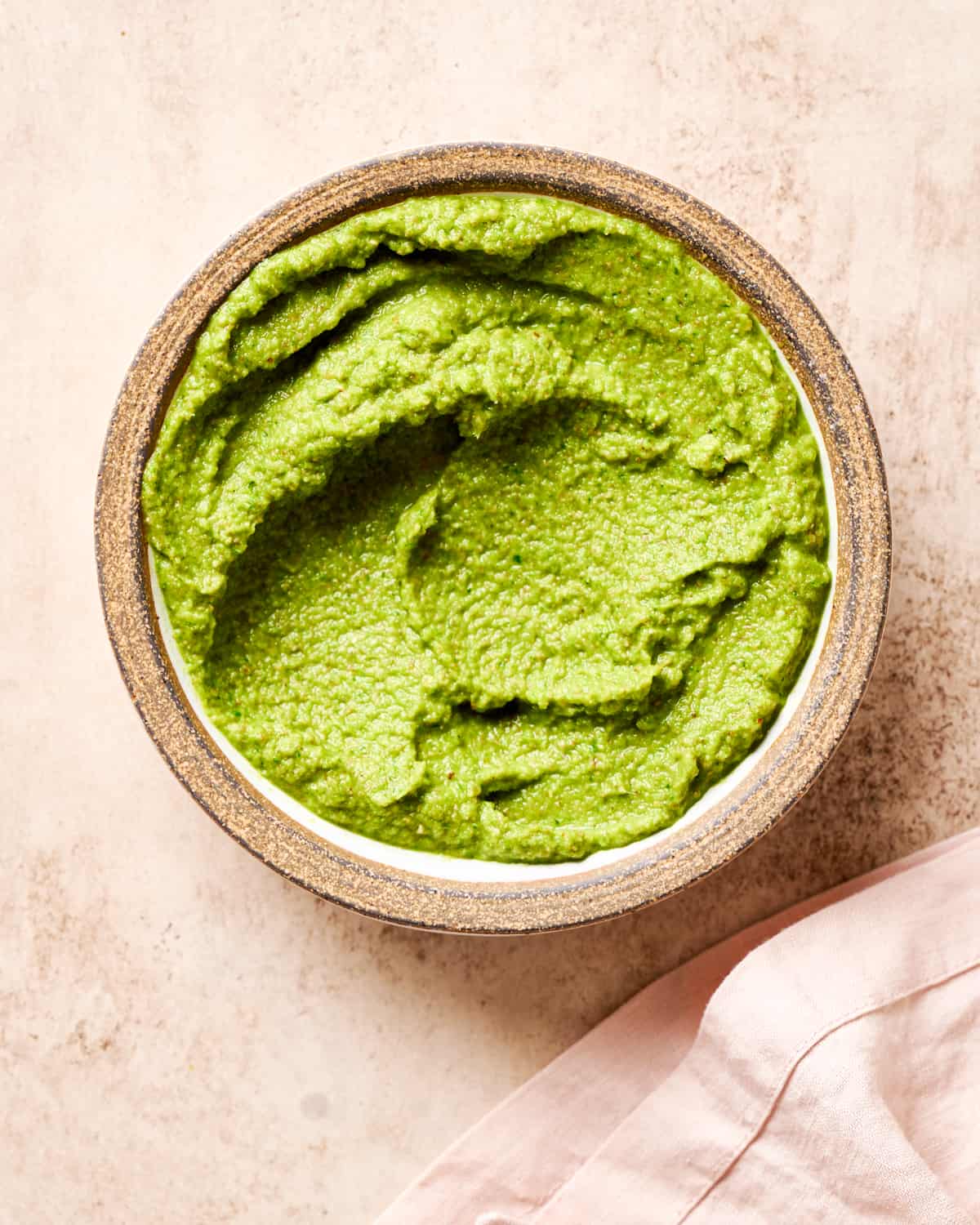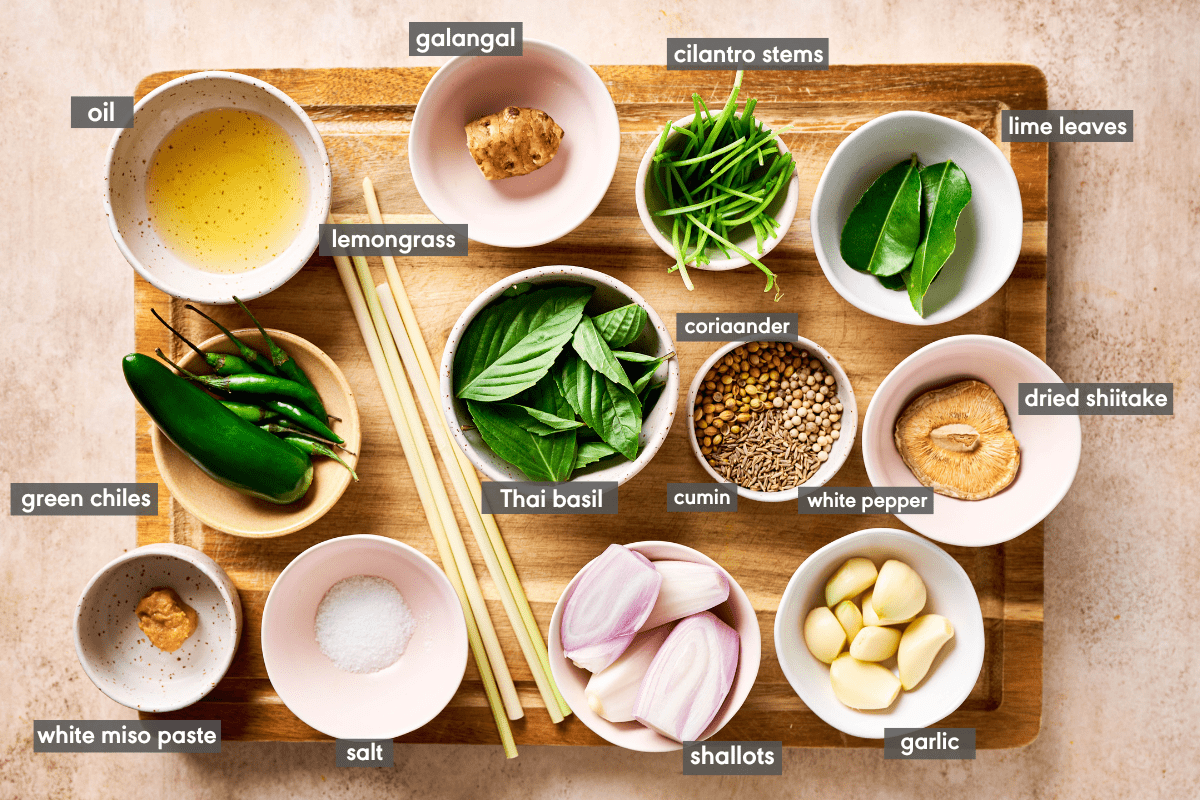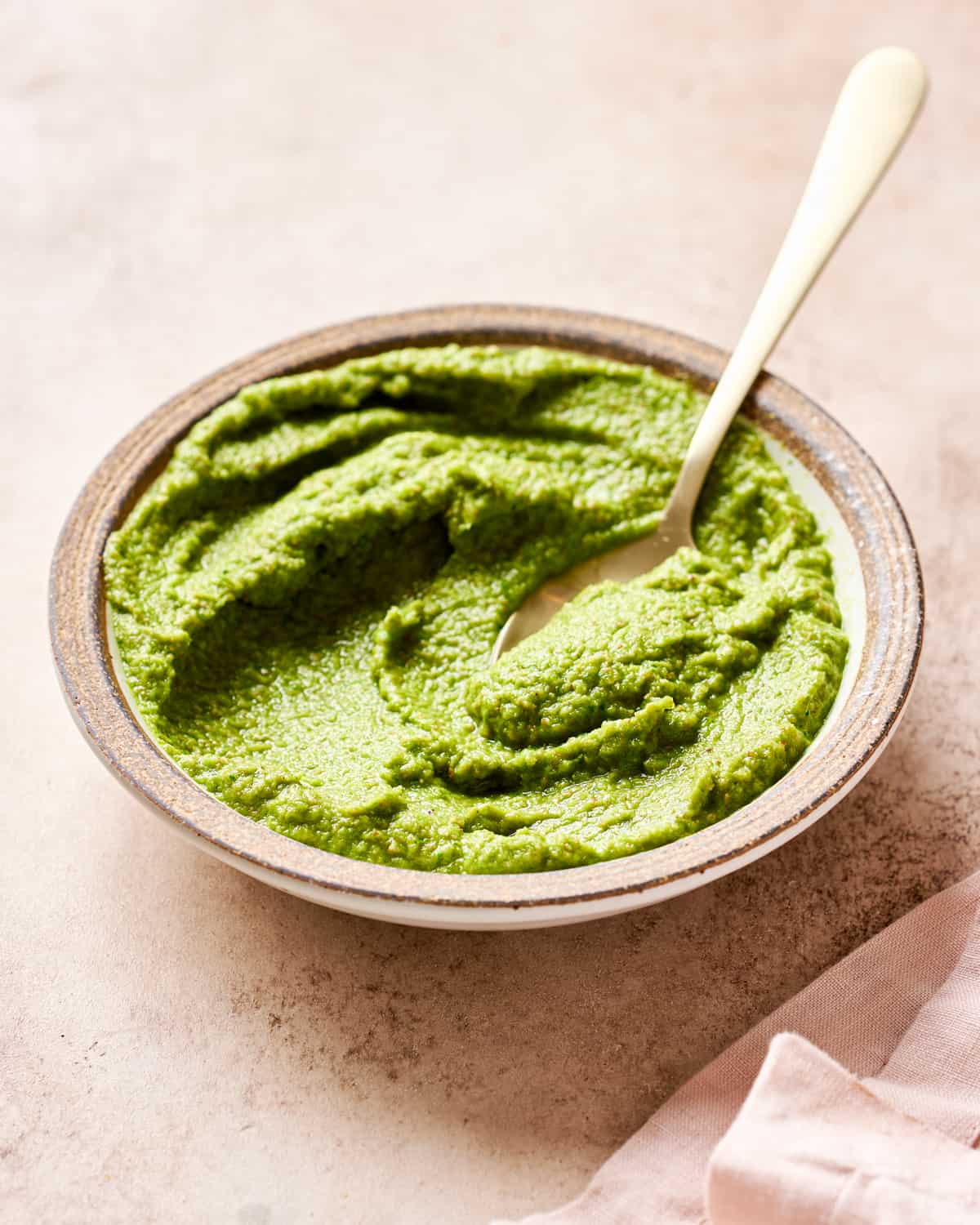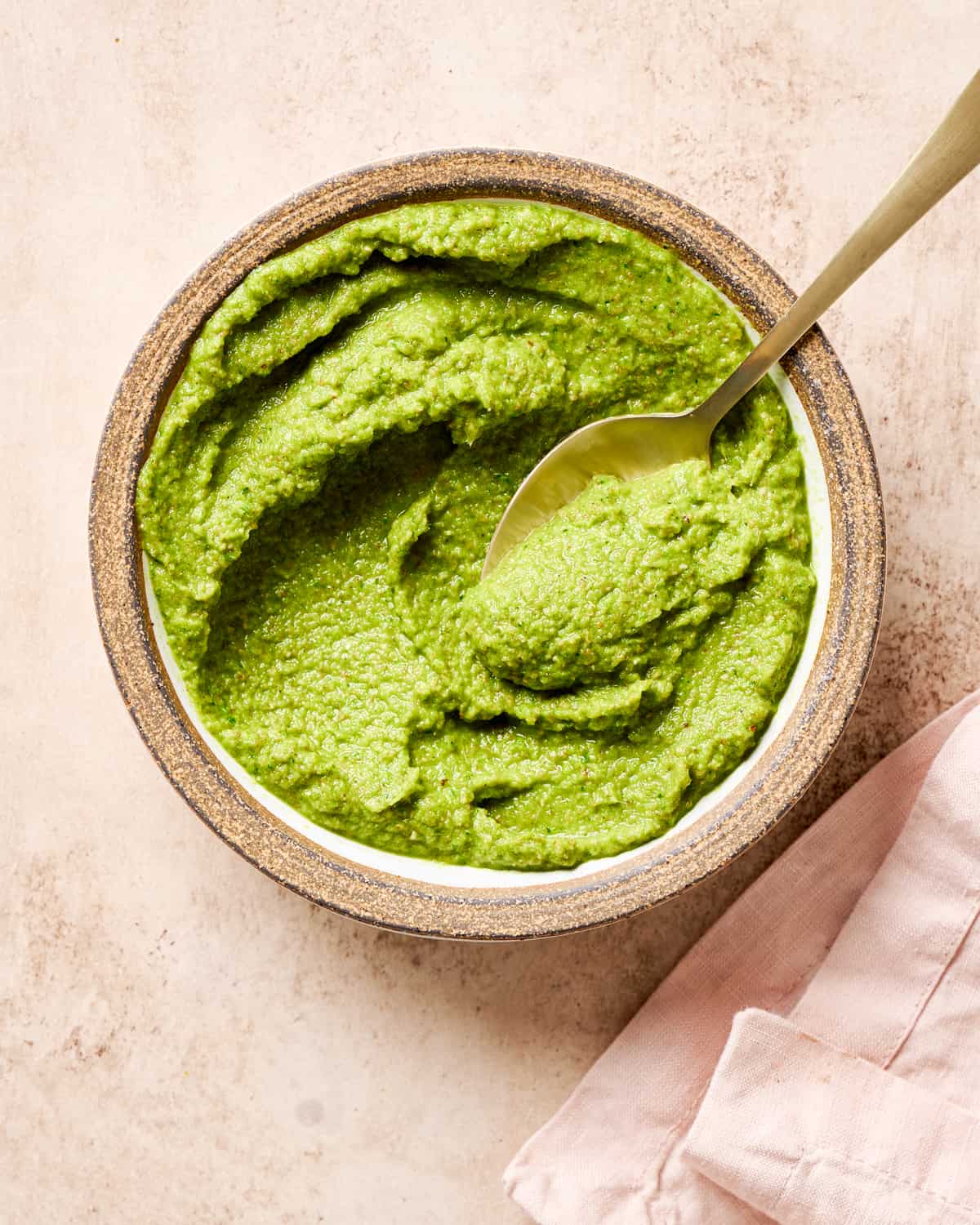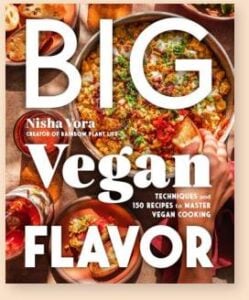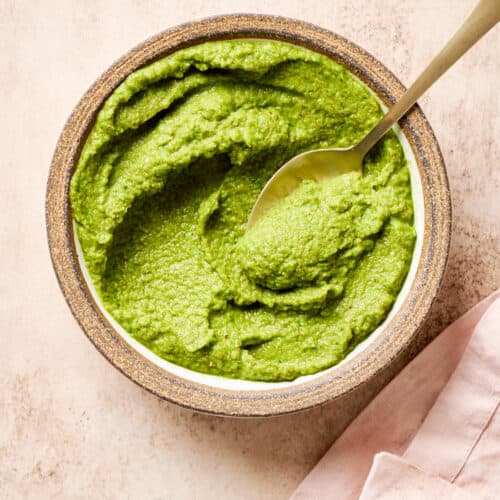It’s loaded with fragrant Thai herbs and aromatics like lemongrass, galangal, and Thai green chiles, and is packed with seriously amazing savory and spicy flavor. We tested this recipe with a variety of tools and spice levels so you can make it using the tools you have at home and tailor the spiciness of your final curry. Plus, it has a great shelf life, so you can whip up a gourmet Vegan Thai Green Curry whenever the mood strikes!
Why make your own Thai curry paste?
You can definitely make a good Thai curry with store-bought curry paste, especially if you use a good brand. But, you’ll never know what incredible Thai curry tastes like unless you make your own paste (or visit Thailand). Making homemade curry paste is a labor of love, but it makes for a curry that’s seriously supercharged with fresh and intense flavor that you can never achieve with store-bought curry paste. We tested our Thai Vegan Green Curry recipe side-by-side with (1) this homemade paste and (2) store-bought paste. Version 2 was, no doubt, very good, but in Version 1, you could taste more layers of flavor, from the intoxicatingly citrusy flavors of lemongrass and lime leaves to the fragrant warmth of the spices and the pungency of the fresh chiles and garlic.Version 1 was also fresher and brighter, no surprise since jarred curry paste might sit on the shelves for months.
Why this recipe works
Traditional and gourmet Thai flavors.
After days of research, watching YouTube videos, taste testing store-bought green curry pastes, and ordering green curry from several local Thai restaurants, I’m confident that this vegan Thai green curry paste is as traditional and as delicious as possible. It makes for a world class Thai Green Curry that will truly wow your palate!
Multiple tested methods for making this.
The traditional method of making Thai curry paste is to pound the ingredients with a mortar and pestle, but it’s very time consuming (takes at least 1, if not 2 hours). We tested this curry paste using a few quicker methods so we could provide precise tips. Skip to the section on “Which Tool?” for our results & recommendations.
Easy to make a big batch + long shelf life.
With a high-powered blender or good-quality immersion blender, this green curry paste is surprisingly easy to double or triple. Which means you can whip up a gourmet restaurant-quality Thai curry pretty quickly the next time(s) around. The curry paste stays fresh without any flavor loss for a week in the fridge (up to two weeks in the fridge with minor flavor loss), or in the freezer for 3 months.
Ingredient notes and substitutions
Bird’s eye chile peppers. AKA Thai chile peppers. Similar to the chile peppers traditionally used in Thailand. They also lend the green color to the curry paste, as well as heat and a fresh, fruity aroma. Substitute: These are very spicy! Check out the Tips section and how to moderate the spiciness level. Lemongrass, galangal, shallots. Sort of the “holy trinity” of Thai cooking and the flavor base for many dishes. Lemongrass adds a unique lemony, minty, and gingery flavor. Galangal is often mistaken with ginger but is quite different. Ginger is warm and spicy, while galangal is cooling with a camphor, pine-y aroma. Cooking Tip: Galangal can have a very hard exterior, so use a sharp knife when slicing it and cut off any hard knobs; angle your knife as needed so you don’t cut through the root. More galangal tips can be found in this video from Thai cooking creator Pailin’s Kitchen. Substitute: Frozen sliced galangal can be found at some Asian grocers. If not available, use fresh ginger plus the zest of ½ medium lime. It lends a different flavor but still tasty. Lime leaves. Fresh lime leaves perfume the entire dish with refreshing, unique citrusy notes. Typically, the zest of makrut limes is used in green curry paste, but those are hard to find. Substitute: Look for frozen lime leaves at some Asian grocers. If not, use the zest of a medium lime. Again, it’s not the same flavor but it’s the best alternative option widely available. Cilantro roots or stems. Traditional green curry paste contains the white roots from cilantro, but this is hard to find. I use cilantro stems with great results. White miso + dried shiitake mushroom: Most traditional Thai curry pastes contain shrimp paste for umami. To keep things vegan, I use a combination of white miso paste—a fermented soybean paste—and a dried shiitake mushroom, two powerful plant-based sources of umami. Tip: For the dried shiitake mushroom, grate it using a microplane, or blitz it in a spice grinder until powdered. Substitute: If you have vegan fish sauce, you can try that instead of miso. No dried shiitake? Double the miso. Spices. Thai green curry paste typically contains coriander & cumin seeds and white peppercorns. If you don’t have these whole spices, there are ground spice conversions in the recipe card.
Tips for making this recipe
Making your own Thai curry paste at home takes some time and effort, but I promise you it is definitely worth it once. It is incredibly flavorful and makes for a spectacular Thai Green Curry. Read on for maximizing your success in the kitchen.
Method 1: Mortar and pestle
This is the traditional method, but it’s very time consuming (takes 1 to 2 hours) and requires serious arm muscle. If you want to still go for it, follow this order of operations:
Method 2: High-powered small-capacity blender
This is my preferred method. You must have a small blender container (about 32 ounces / 1L or smaller, like this for a Vitamix, this for a Ninja, or a separate cup like this one, etc.). If you only have a medium-sized blender container (e.g., 48 ounces/1.5 L), you need to double the curry paste. If you only have a large-sized blender container (64 ounces/2L or bigger), you need to triple the curry paste so it can blend well. Don’t worry, though, that’s not bad news! This curry paste has a long shelf life so you can make homemade Thai green curry in much less time.
Method 3: Immersion blender
If you have a good-quality, strong immersion blender, you can use that.
Add the remaining ingredients on top of the oil. Start blending on low speed, using the blender’s tamper or a similar tool to push everything down, then gradually increase the speed to high. Use the tamper to move up and down constantly.
NOTE: You must have your blender lid in place in order to use the tamper. Otherwise, the tamper can hit the blades and shred.
Occasionally, stop the blender, and use a silicone spatula to scrape everything down a few times. It should be smooth and look like pureed avocado by the end.
Method 4: Food processor (not ideal)
Most food processors for the home kitchen aren’t strong enough to make a curry paste totally smooth. The flavor is still excellent, so if you don’t mind slight texture in your curry, you can use one. Finely chop all the ingredients, especially lemongrass and galangal. As with the other electric methods, use the oil to help bring everything together.
Make a double or triple batch.
Tailor to your spice level.
Please read on so your final green curry doesn’t end up too spicy for you! Spicy version: Use 8 to 12 green bird’s eye chile peppers peppers (~12 to 20g) PLUS 1 jalapeño pepper (~25 to 30g) with membranes removed. This is about a level 7 on the 1-10 scale at a legit Thai restaurant. Disclaimer: This is spicy so use this only if you can hang with spicy food! Mild heat: Use 2 to 3 jalapeño peppers (remove most of the membranes) and ½ of a small green bell pepper.Moderate heat: Use 4 to 6 green bird’s eye chile peppers and 2 jalapeños with membranes removed. If you can’t find bird’s eye chile peppers but want heat, use 45g of other green chiles: about 3 serrano peppers (remove some membranes to moderate the heat). Or, 2 to 3 jalapeño peppers with the membranes.
Protect your eyes.
Don’t stick your face right above the blender, as the capsaicin in the peppers can make your eyes burn and make you cough.
Grind the spices, if you can.
Grind toasted whole spices with an electric spice grinder or mortar and pestle before adding them to the other ingredients for a silky, smooth consistency. If you don’t mind some bits of texture and you have a high-powered blender, you can skip this step. Or, use pre-ground spices. If love this Thai Green Curry Paste recipe, please give it a rating and review below! And of course, tag me with your remakes on Instagram! Recipe: Nisha Vora / Rainbow Plant Life | Photography: Megan Morello
Big Vegan Flavor
Techniques and 150 recipes to master vegan cooking.
